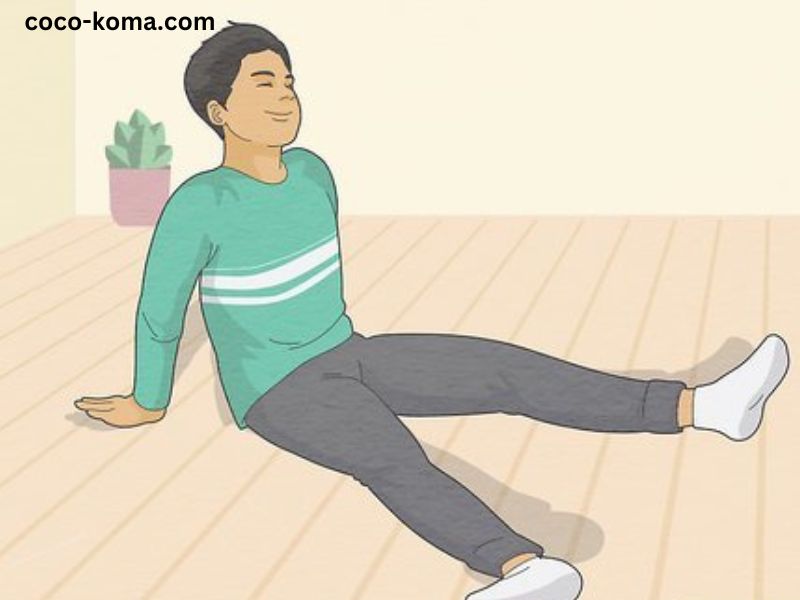Fitness culture has seen a significant surge in popularity, and gyms have become a popular destination for people of all ages. With social media platforms filled with fitness influencers and athletes sharing their workouts, it’s natural that even younger individuals are drawn to the idea of hitting the gym. However, a common question arises: how old do you have to be to go to the gym? This question isn’t as straightforward as it might seem because the answer depends on a variety of factors including gym policies, health concerns, and the type of workout being performed.
In this article, we’ll explore various aspects of age requirements for gym memberships, discuss fitness safety for different age groups, and provide guidance on when it’s appropriate for young individuals to start their fitness journey.
Gym Policies and Age Restrictions
Each gym operates under its own set of policies when it comes to age requirements. These rules are generally influenced by safety concerns, insurance policies, and legal regulations.
- General Gym Age Requirement: Most gyms set a minimum age requirement for regular gym use, typically ranging from 12 to 16 years old. This age limit varies depending on the country, gym brand, and local laws. For instance, large fitness chains like Planet Fitness or 24 Hour Fitness may have different age policies.
- Planet Fitness: In many locations, Planet Fitness requires individuals to be at least 13 years old to join, with parental consent required for minors under 18.
- 24 Hour Fitness: This chain usually has a minimum age requirement of 12 years for supervised use, but minors under 18 must have a parent or guardian sign their membership agreement.
- Gold’s Gym: Gold’s Gym allows teens as young as 13 to join, provided that they have parental consent, and they often offer teen-specific membership plans during certain times of the year.
- Supervised vs. Unsupervised Access: Many gyms allow younger teenagers, typically those aged 12 to 15, to use the gym facilities only under adult supervision. Once they reach 16, they may be allowed to work out independently. This is to ensure safety, as young individuals may not yet have the knowledge or experience to use equipment properly, increasing the risk of injury.
- Special Youth Programs: Some gyms offer youth programs tailored to younger children. These classes often focus on promoting physical activity in a fun and engaging way rather than strength training or intense cardio. These programs can start as young as 5 to 7 years old, teaching basic fitness skills like balance, coordination, and flexibility.
Physical Readiness and Safety Concerns
The question of how old one has to be to go to the gym also depends heavily on physical readiness and safety concerns. Just because a gym allows teens to work out doesn’t necessarily mean it’s appropriate for all young individuals. Fitness at a young age is beneficial but must be approached with caution, particularly regarding resistance training and heavy lifting.
1. Pre-Adolescence (Ages 5–12)
Children between the ages of 5 and 12 should focus on bodyweight exercises, agility drills, and activities that promote flexibility, coordination, and cardiovascular endurance. For this age group, workouts should be centered around fun physical activities rather than structured gym sessions. Youth at this stage are still developing and are not typically ready for resistance training or the use of weight machines.
**Recommended Activities**: Running, cycling, swimming, playing sports (like soccer or basketball), and exercises like jumping jacks, push-ups, and squats are ideal for this age group.
- **Why Avoid Heavy Lifting?**: Heavy lifting or intense strength training can potentially harm a child's growing bones, muscles, and joints. Strength training can begin around the later stages of childhood, but it must be done under professional supervision with an emphasis on proper form and light weights.
2. Adolescence (Ages 13–18)
This is the most common age group for teens to start visiting the gym. Adolescents are at a critical stage of growth, and regular physical activity is essential to their health. Teenagers in this age range can begin incorporating more structured gym workouts, including resistance training, but should still focus on proper technique and avoid excessive weights to prevent injury.
**Strength Training**: For teens between 13 and 15, strength training should emphasize low to moderate weight with higher repetitions. The focus should be on mastering form before gradually increasing resistance.
- **Cardio and Endurance**: Cardio exercises like running, rowing, and cycling are beneficial for heart health and endurance. Teens are encouraged to mix strength training with cardio workouts to develop balanced fitness.
- **Avoid Overtraining**: It's important to avoid pushing teens too hard. Overtraining can lead to injuries, burnout, or even disrupt their natural growth process.3. Young Adults (Ages 18 and Above)
Once individuals reach 18, they are considered adults in the fitness world and can access almost any part of the gym without restrictions. By this age, most gyms allow unsupervised access, and individuals have the freedom to explore strength training, high-intensity cardio, or specialized workout routines like CrossFit or powerlifting.
Young adults are usually fully developed physically and mentally, allowing them to handle more rigorous workouts and heavier lifting. However, even at this age, it’s crucial to start slow, especially for beginners, and gradually increase intensity over time to avoid injury.
Benefits of Starting Gym Workouts Early
Engaging in physical activity from a young age offers a myriad of benefits that extend into adulthood. Here are some reasons why starting early is a good idea:
- Developing Healthy Habits: When young individuals begin their fitness journey early, they are more likely to carry these habits into adulthood, leading to a healthier lifestyle.
- Physical Health: Regular exercise strengthens muscles, bones, and joints. It improves cardiovascular health, reduces the risk of obesity, and helps in maintaining a healthy weight.
- Mental Health: Exercise releases endorphins, which help reduce stress and improve mood. Regular physical activity also promotes better sleep, concentration, and cognitive function, which is especially important for young people in school.
- Confidence Building: Starting fitness at a young age can boost self-esteem and confidence. Mastering new skills and achieving fitness goals can provide a sense of accomplishment.
- Social Interaction: Youth programs and gym environments allow young people to meet others with similar interests, fostering social connections and friendships.
The Role of Parents and Guardians
When it comes to minors working out at the gym, parental involvement is key. Parents should take an active role in their child’s fitness journey, whether by working out together or monitoring their progress. Here are some tips for parents:
- Supervision and Guidance: If the child is under 16, it’s vital for parents to ensure that their child is being properly supervised in the gym. This can be done by either accompanying them or enrolling them in programs led by certified trainers.
- Setting Realistic Goals: Help children and teens set fitness goals that are age-appropriate and achievable. This prevents frustration and the temptation to push beyond safe limits.
- Encouraging Fun: Fitness should be enjoyable for young people. Encouraging participation in sports, dance classes, or group fitness activities that they enjoy can help develop a positive attitude towards physical activity.
- Monitoring Progress: It’s important to track progress to ensure that young individuals are gaining strength and endurance in a safe and healthy way. Any signs of injury, fatigue, or burnout should be addressed immediately.
Conclusion
The appropriate age to start going to the gym depends on several factors, including gym policies, the type of workout, and the physical maturity of the individual. While some gyms allow children as young as 12 to join, it is important to remember that fitness should be approached with care. Younger individuals should focus on bodyweight exercises, flexibility, and cardiovascular health before moving on to more advanced strength training.
For teens and young adults, gym workouts can provide significant health benefits, from improved physical health to mental well-being and confidence. However, starting slowly, ensuring proper technique, and maintaining balance in their fitness regimen is crucial to avoiding injury and fostering long-term success.
Ultimately, whether you’re a young teen eager to hit the gym or a parent looking to support your child’s fitness goals, the key is to approach exercise with safety, consistency, and enjoyment.


